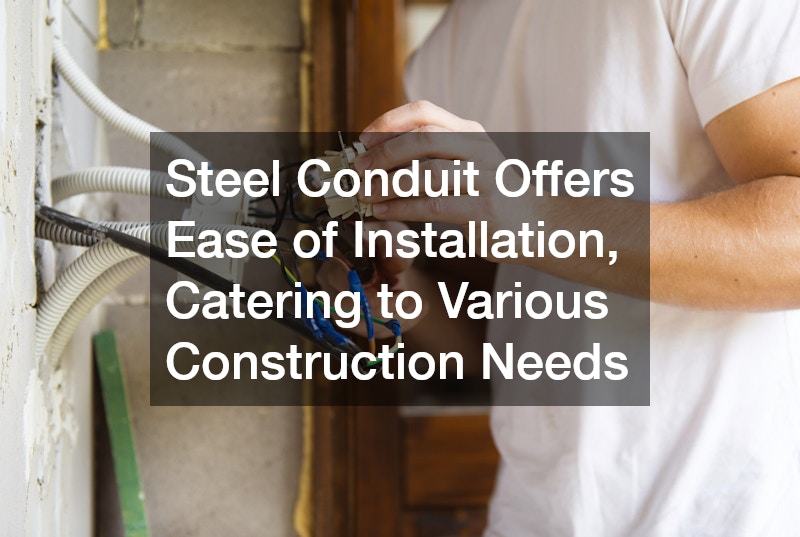Steel conduit plays a critical role in electrical systems, ensuring safety and reliability in a wide range of construction projects. Its robust composition offers protection and stability for wiring, particularly in environments prone to mechanical impact or corrosive elements. As an essential component of modern building infrastructures, understanding its application, benefits, and installation standards is crucial for engineers, electricians, and architects.
Originally developed to replace wooden and fiber conduits, steel conduit has significantly evolved since its inception. The combination of durability and flexibility makes it an attractive choice for both indoor and outdoor installations. Many industries rely on steel conduit to safeguard crucial wiring systems, reducing the risk of electrical fires and exposure to environmental factors.
Despite its durability, steel conduit also offers ease of installation, catering to various construction needs. It can be customized with different finishes to enhance resistance to specific environmental conditions. Additionally, it complements other materials and systems effectively, allowing for integrated solutions that meet stringent safety standards.
Types of Steel Conduit
Steel conduit comes in several types, each suited to different environments and applications. Rigid Metal Conduit (RMC) is one of the heaviest and thickest options available, designed for maximum protection in heavy-duty applications. Another popular type, Intermediate Metal Conduit (IMC), provides a thinner alternative to RMC while maintaining adequate protection and is often used in commercial and industrial environments.
Electrical Metallic Tubing (EMT) is the lightest and most flexible of the steel conduits, making it ideal for projects requiring easy bends around obstacles and tight spaces. EMT’s versatility is often favored in residential construction due to its ability to be installed quickly without sacrificing integrity. Additionally, less material use makes EMT a cost-effective solution in scenarios where space is constrained.
Lastly, there is Flexible Metal Conduit (FMC), which is particularly beneficial in areas requiring vibration resistance or frequent adjustments. FMC allows for movement and flexibility, making it suitable for dynamic applications. When choosing a type of steel conduit, considerations such as environmental conditions, installation accessibility, and specific project demands should all be taken into account.
Benefits of Using Steel Conduit
Steel conduits provide substantial benefits in terms of safety and durability. Their inherent strength offers excellent protection against physical damage, a key consideration in busy or accessible areas. Steel’s natural fire resistance is another critical advantage, reducing fire risks associated with electrical shorts and minimizing potential damage.
Furthermore, steel conduits shield sensitive wiring from electromagnetic interference, ensuring signal integrity for high-tech and communications equipment. This feature is increasingly relevant in modern applications with the proliferation of sensitive electronic devices. Steel conduit’s physical and electromagnetic protective properties make it an indispensable asset in secure installations.
The versatility of steel conduits also contributes to their widespread use. They seamlessly integrate with other building materials and systems, allowing for a uniform design aesthetic. Steel conduits can also be painted or coated to match specific design requirements or boost corrosion resistance, expanding their usefulness in places with stringent environmental controls.
Installation and Maintenance of Steel Conduit
Proper installation of steel conduit is essential to maximize its protective qualities and ensure long-term performance. Understanding local building codes and standards is the first crucial step, as different environments may have specific requirements for conduit use. Proper planning and layout are integral in reducing installation time and minimizing material waste.
Installing steel conduit requires attention to detail, particularly when making bends and connections. Tools such as conduit benders facilitate smoother installation, ensuring tight and accurate bends that align with structural requirements. Periodic maintenance and inspections help maintain the integrity of the conduit system, particularly in demanding environments or where high exposure to corrosive materials is a factor.
Maintenance involves checking for visible signs of corrosion, ensuring all connections are secure, and maintaining a clear path for wiring. When issues arise, timely repairs are necessary to prevent costly downtime or hazards. Regular updates on technological advances and material improvements can further enhance the performance of steel conduit systems.
Steel conduit is an invaluable component in electrical installations, delivering unmatched protection and versatility. Its ability to withstand rigorous conditions while ensuring safe electrical paths makes it a preferred choice across various industries. Understanding the different types, benefits, and installation practices of steel conduit is essential for those involved in design, construction, and maintenance.
Through innovation and continuous improvement, steel conduit solutions continue to evolve, offering enhanced safety features and environmental adaptability. As technology advances and construction needs become more complex, steel conduit remains a reliable and robust option. Whether for residential or industrial applications, selecting the right steel conduit plays a pivotal role in the infrastructure success.
The dynamic properties and resilience of steel conduit make it a cornerstone of modern construction practices, addressing ever-changing environmental and regulatory demands. By keeping pace with evolving standards and materials, stakeholders can ensure their projects benefit from steel conduit’s contributions to safety and efficiency. With the right knowledge and application, steel conduit supports the infrastructure of tomorrow.

